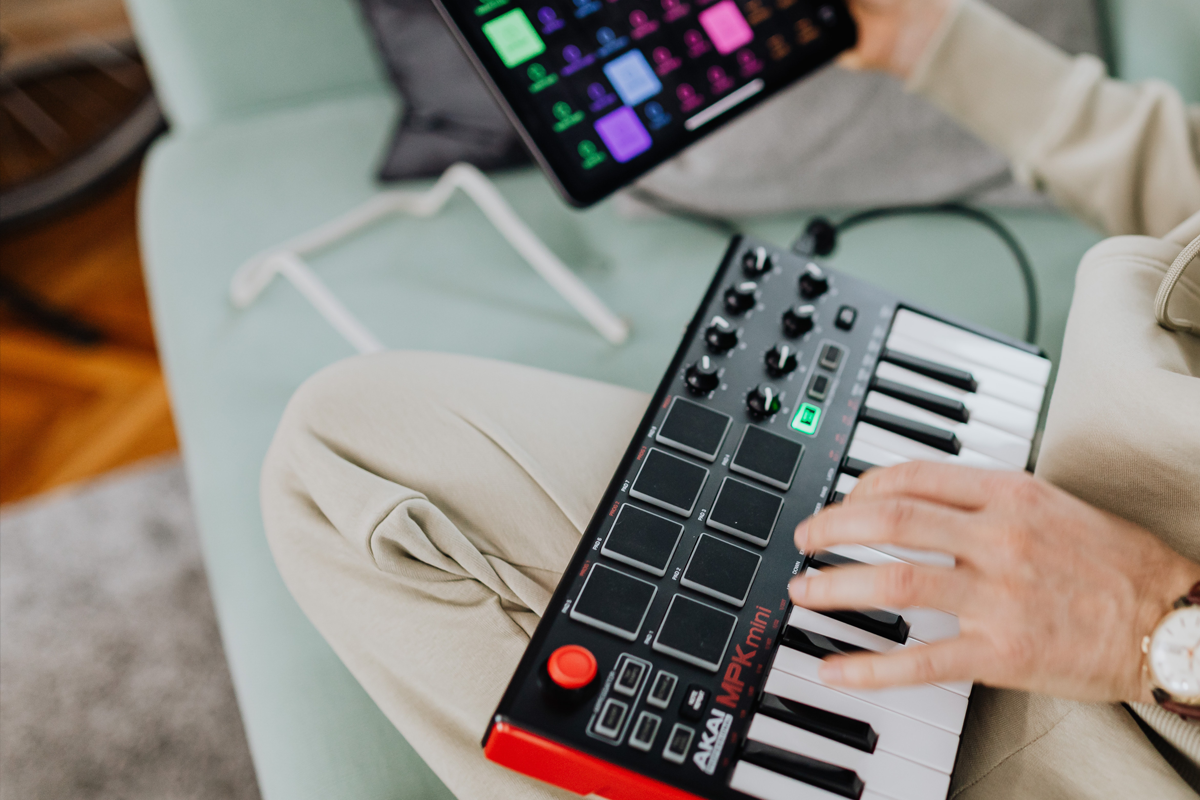
MIDI loops and drum samples are a powerful combination for music production. MIDI loops, also known as MIDI files, are digital files that contain musical information such as note data, tempo, and instrumentation. This information can be used to control software instruments and create a wide range of musical styles and sounds. In this blog we'll discuss in a bit more detail how you can use midi in your production and take advantage of it's flexibility.
What is midi?
MIDI (Musical Instrument Digital Interface) is a protocol for communicating musical information between electronic devices, such as digital instruments, computers, and other equipment. MIDI data consists of messages that control various aspects of a performance, such as the note played, the velocity (or force) with which a note is played, and the duration of a note.
Midi interfaces
MIDI messages are sent over a MIDI cable or through a MIDI interface, which connects the devices together. Each device that sends or receives MIDI data is assigned a unique MIDI channel. The messages are then sent to a specific channel, allowing different instruments or sound generators to receive and respond to different information. It's also possible to compose or write music using midi.
How does it record?
When a MIDI-compatible instrument, such as a digital piano or synthesizer, is played, it sends MIDI messages to a computer or other device. The receiving device can then interpret these messages and use them to trigger sounds or control other performance parameters.
There are different types of MIDI messages, including:
Note On/Off:
These messages indicate when a note is played or released.
Control Change:
These messages allow you to change various parameters of a sound, such as the volume or modulation.
Program Change:
These messages allow you to change the sound or patch on a synthesizer or other instrument.
In summary, MIDI is a way to send and receive data of music notes, velocity, duration etc. between electronic devices to control and synchronize the playing of multiple instruments.
What are midi drum loops?
MIDI drum loops are a type of MIDI loop that specifically contains drum patterns and rhythms. These loops can be used to quickly create a drum track for a song or production. MIDI drum files, also known as drum MIDI packs, are a collection of MIDI drum loops that can be used to create a full drum kit. These packs often include a variety of different drum sounds and styles, allowing for maximum versatility in music production.
Drum samples
Using drum samples with MIDI loops is a great way to add realism and depth to your drum tracks. Drum samples are of course, recordings of actual drum sounds that can be triggered by MIDI information. By using a combination of MIDI drum loops and drum samples, you can create a drum track that is both dynamic and expressive.
Macdrum.com
Macdrum's sample and kit collections and other packs can be used with midi loops and offer some great professional drum sounds from acoustic to electronic.
Software instruments
There are many different ways to incorporate drum samples into your MIDI drum tracks. One popular method is to use a software instrument, such as a drum sampler, to trigger the samples. This allows you to easily control the samples and incorporate them into your MIDI loops.
Another method is to use a drum machine with midi loops, such as a Roland TR-808 or Akai MPC, to trigger the samples. This method gives you a more hands-on approach to creating drum tracks, allowing you to create and play unique drums and dynamic beats.
Overall, MIDI loops and drum samples are a powerful combination for music production. Whether you are creating electronic music, hip-hop, or rock, these tools can help you create dynamic and expressive drum tracks and grooves. With a wide variety of MIDI drum loops and drum samples available, the possibilities are endless. If you already have a sample library then it's possible to easily change sounds and experiment. Most DAWs have a bank of sounds as standard, than can help get you started.
Try taking an existing midi file and assigning it in different ways. Editing with midi can be fun and unlike audio is more flexible. But be warned it can become robotic in some instances. Drum fills from a VST are still a way from sounding like the real thing and can effect overall quality. Depending on genre of course with styles such as hip hop and electronic music benefiting from a synthetic style, the natural sound and quality of the fills are less important and can be arranged to suite the style.
Try running midi back through a synth. Using say a filter or many of the synths effects can sound awesome. Remember to keep each element organised in folders. Whether thats midi progressions or audio samples. Your workstation will thanks you for it. There's nothing worse than looking for those recent great midi progressions and not knowing where to start because your library is all over the place.
It's also possible to create midi even if you don't play an instrument. Once you get the hang of it you can create tracks manually to sit vocals over. This adds to what can be done in your DAW and is a great way of getting creative and bringing a whole new dimension to your compositions, orchestra anyone? Free midi loops can be a great place to start and can be found online. Remember though that free midi loops may not be royalty free to release. Always check before you do.
